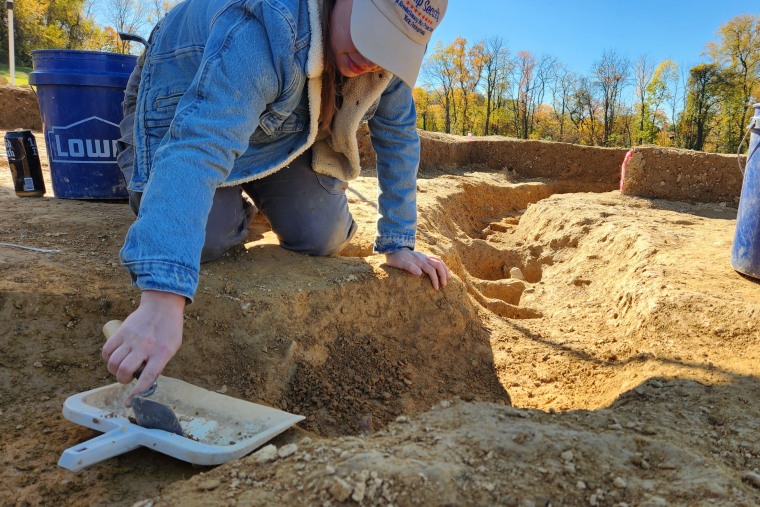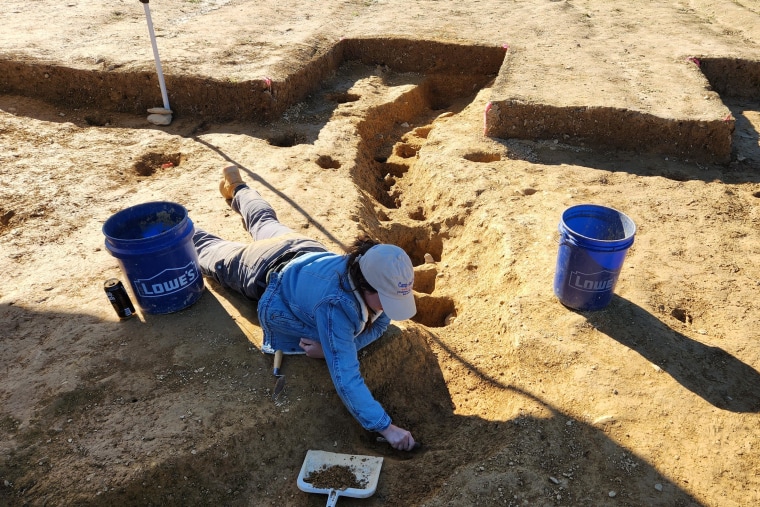Researchers say they solved a decades-old riddle this week by finding remnants of the stockade and therefore the site of a prison camp in York, Pennsylvania, that housed British soldiers for nearly two years during the American Revolutionary War.
The location of Camp Security was thought to have been on land acquired by the local government nearly a decade ago. On Monday, an archaeological team working there located what they believe to be the prison camp’s exterior security fence.
The camp housed more than 1,000 English, Scottish and Canadian privates and noncommissioned officers for 22 months during war, starting with a group of prisoners who arrived in 1781, four years after their surrender at Saratoga, New York. By the next year, there were some 1,200 men at the camp, along with hundreds of women and children.
Fieldwork at the site, which also includes the lower-security Camp Indulgence, has gone on for decades, but the exact spot of Camp Security — where prisoners from the 1781 Battle of Yorktown, Virginia, were kept — had been unknown until a telltale pattern of post holes in a foot-deep trench was uncovered.
“This has been a long project, and to finally see it come to fruition, or at least know you’re not nuts, that’s wonderful,” said Carol Tanzola, who as president of Friends of Camp Security led fundraising for the project.
Lead archaeologist John Crawmer said the location site had been narrowed down after about 28 acres were plowed for metal detection and surface collection of artifacts in 2020. That further reduced the search area to about 8 acres, where long exploratory trenches were dug last year.

Those trenches helped the team identify post holes that in turn led to the pattern of holes and a stockade trench that matched stockades at other 18th-century military sites, Crawmer said.
Next spring, Crawmer and other researchers hope to determine the full size of the stockade and perform a focused search for artifacts within and around it.
“Was it circular or square, what’s inside, what’s outside?” Crawmer said. “As we do that, we’re going to start finding those 18th-century artifacts, the trash pits. We’ll be able to start answering questions about where people were sleeping, where they were living, where they were throwing things away, where the privies are.”
Crawmer said there is evidence the vertical posts that formed the security stockade were not in the ground for very long and that they may have been dug up and reused after the camp was closed in 1783.
A contemporaneous account of camp life by a British surgeon’s mate said there was a “camp fever” that might have killed some of the prisoners, and a list of Camp Security inmates was located in the British National Archives. No human remains have been found at the site.
Historians confirmed local lore about the general location of Camp Security and Camp Indulgence after a 1979 archaeological study of a small portion of the property produced buckles, buttons and other items associated with British soldiers of the period. That survey also found 20 coins and 605 straight pins that may have been used by prisoners to make lace.
